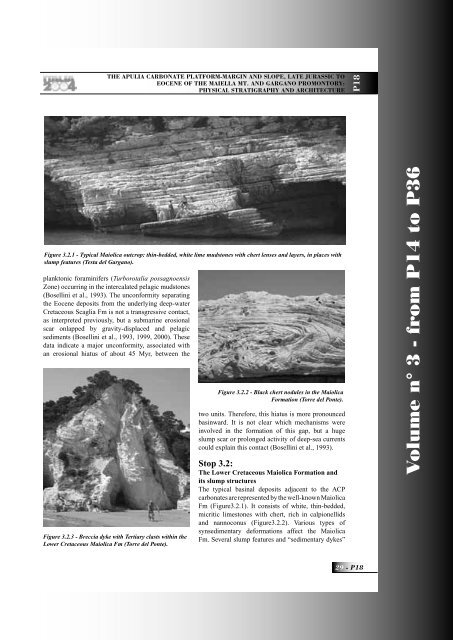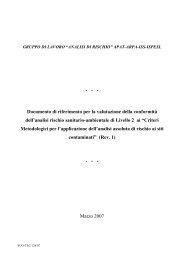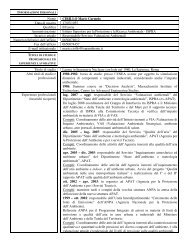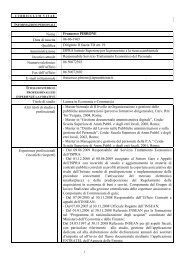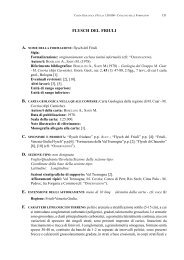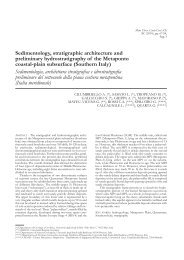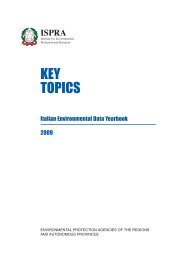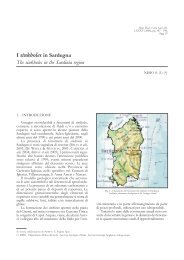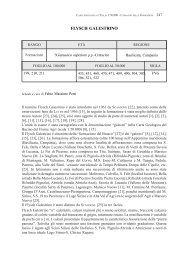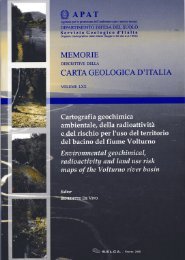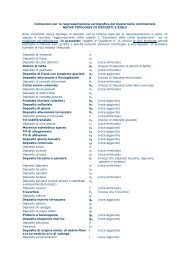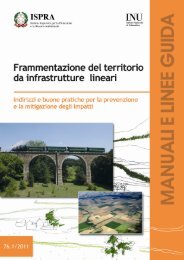Guidebook - Ispra
Guidebook - Ispra
Guidebook - Ispra
You also want an ePaper? Increase the reach of your titles
YUMPU automatically turns print PDFs into web optimized ePapers that Google loves.
THE APULIA CARBONATE PLATFORM-MARGIN AND SLOPE, LATE JURASSIC TO<br />
EOCENE OF THE MAIELLA MT. AND GARGANO PROMONTORY:<br />
PHYSICAL STRATIGRAPHY AND ARCHITECTURE P18<br />
Figure 3.2.1 - Typical Maiolica outcrop: thin-bedded, white lime mudstones with chert lenses and layers, in places with<br />
slump features (Testa del Gargano).<br />
planktonic foraminifers (Turborotalia possagnoensis<br />
Zone) occurring in the intercalated pelagic mudstones<br />
(Bosellini et al., 1993). The unconformity separating<br />
the Eocene deposits from the underlying deep-water<br />
Cretaceous Scaglia Fm is not a transgressive contact,<br />
as interpreted previously, but a submarine erosional<br />
scar onlapped by gravity-displaced and pelagic<br />
sediments (Bosellini et al., 1993, 1999, 2000). These<br />
data indicate a major unconformity, associated with<br />
an erosional hiatus of about 45 Myr, between the<br />
Figure 3.2.3 - Breccia dyke with Tertiary clasts within the<br />
Lower Cretaceous Maiolica Fm (Torre del Ponte).<br />
Figure 3.2.2 - Black chert nodules in the Maiolica<br />
Formation (Torre del Ponte).<br />
two units. Therefore, this hiatus is more pronounced<br />
basinward. It is not clear which mechanisms were<br />
involved in the formation of this gap, but a huge<br />
slump scar or prolonged activity of deep-sea currents<br />
could explain this contact (Bosellini et al., 1993).<br />
Stop 3.2:<br />
The Lower Cretaceous Maiolica Formation and<br />
its slump structures<br />
The typical basinal deposits adjacent to the ACP<br />
carbonates are represented by the well-known Maiolica<br />
Fm (Figure3.2.1). It consists of white, thin-bedded,<br />
micritic limestones with chert, rich in calpionellids<br />
and nannoconus (Figure3.2.2). Various types of<br />
synsedimentary deformations affect the Maiolica<br />
Fm. Several slump features and “sedimentary dykes”<br />
29 - P18<br />
Volume n° 3 - from P14 to P36


